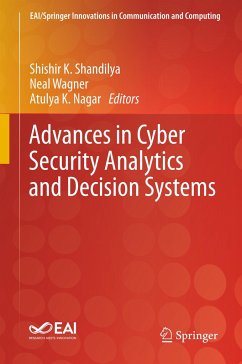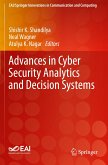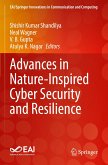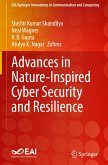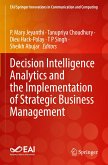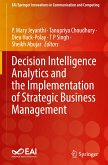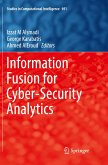Advances in Cyber Security Analytics and Decision Systems
Herausgegeben:Shandilya, Shishir K.; Wagner, Neal; Nagar, Atulya K.
Advances in Cyber Security Analytics and Decision Systems
Herausgegeben:Shandilya, Shishir K.; Wagner, Neal; Nagar, Atulya K.
- Gebundenes Buch
- Merkliste
- Auf die Merkliste
- Bewerten Bewerten
- Teilen
- Produkt teilen
- Produkterinnerung
- Produkterinnerung
This book contains research contributions from leading cyber security scholars from around the world. The authors provide comprehensive coverage of various cyber security topics, while highlighting recent trends. The book also contains a compendium of definitions and explanations of concepts, processes, acronyms, and comprehensive references on existing literature and research on cyber security and analytics, information sciences, decision systems, digital forensics, and related fields. As a whole, the book is a solid reference for dynamic and innovative research in the field, with a focus on…mehr
Andere Kunden interessierten sich auch für
![Advances in Cyber Security Analytics and Decision Systems Advances in Cyber Security Analytics and Decision Systems]() Advances in Cyber Security Analytics and Decision Systems112,99 €
Advances in Cyber Security Analytics and Decision Systems112,99 €![Advances in Nature-Inspired Cyber Security and Resilience Advances in Nature-Inspired Cyber Security and Resilience]() Advances in Nature-Inspired Cyber Security and Resilience75,99 €
Advances in Nature-Inspired Cyber Security and Resilience75,99 €![Advances in Nature-Inspired Cyber Security and Resilience Advances in Nature-Inspired Cyber Security and Resilience]() Advances in Nature-Inspired Cyber Security and Resilience75,99 €
Advances in Nature-Inspired Cyber Security and Resilience75,99 €![Decision Intelligence Analytics and the Implementation of Strategic Business Management Decision Intelligence Analytics and the Implementation of Strategic Business Management]() Decision Intelligence Analytics and the Implementation of Strategic Business Management82,99 €
Decision Intelligence Analytics and the Implementation of Strategic Business Management82,99 €![Decision Intelligence Analytics and the Implementation of Strategic Business Management Decision Intelligence Analytics and the Implementation of Strategic Business Management]() Decision Intelligence Analytics and the Implementation of Strategic Business Management82,99 €
Decision Intelligence Analytics and the Implementation of Strategic Business Management82,99 €![Information Fusion for Cyber-Security Analytics Information Fusion for Cyber-Security Analytics]() Information Fusion for Cyber-Security Analytics86,99 €
Information Fusion for Cyber-Security Analytics86,99 €![Secure Edge and Fog Computing Enabled AI for IoT and Smart Cities Secure Edge and Fog Computing Enabled AI for IoT and Smart Cities]() Secure Edge and Fog Computing Enabled AI for IoT and Smart Cities112,99 €
Secure Edge and Fog Computing Enabled AI for IoT and Smart Cities112,99 €-
-
-
This book contains research contributions from leading cyber security scholars from around the world. The authors provide comprehensive coverage of various cyber security topics, while highlighting recent trends. The book also contains a compendium of definitions and explanations of concepts, processes, acronyms, and comprehensive references on existing literature and research on cyber security and analytics, information sciences, decision systems, digital forensics, and related fields. As a whole, the book is a solid reference for dynamic and innovative research in the field, with a focus on design and development of future-ready cyber security measures. Topics include defenses against ransomware, phishing, malware, botnets, insider threats, and many others.
Produktdetails
- Produktdetails
- EAI/Springer Innovations in Communication and Computing
- Verlag: Springer / Springer International Publishing / Springer, Berlin
- Artikelnr. des Verlages: 978-3-030-19352-2
- 1st edition 2020
- Seitenzahl: 160
- Erscheinungstermin: 7. Januar 2020
- Englisch
- Abmessung: 241mm x 160mm x 15mm
- Gewicht: 386g
- ISBN-13: 9783030193522
- ISBN-10: 3030193527
- Artikelnr.: 55986443
- Herstellerkennzeichnung Die Herstellerinformationen sind derzeit nicht verfügbar.
- EAI/Springer Innovations in Communication and Computing
- Verlag: Springer / Springer International Publishing / Springer, Berlin
- Artikelnr. des Verlages: 978-3-030-19352-2
- 1st edition 2020
- Seitenzahl: 160
- Erscheinungstermin: 7. Januar 2020
- Englisch
- Abmessung: 241mm x 160mm x 15mm
- Gewicht: 386g
- ISBN-13: 9783030193522
- ISBN-10: 3030193527
- Artikelnr.: 55986443
- Herstellerkennzeichnung Die Herstellerinformationen sind derzeit nicht verfügbar.
Dr. Shishir Kumar Shandilya currently holds the position of Division Head of Cyber Security and Digital Forensics in School of Computer Science & Engineering, of VIT Bhopal University, India. He is Cambridge University Certified Professional Teacher and Trainer, Senior Member of IEEE-USA and also elected as an executive member of IEEE Industry-Outreach Committee-India. Dr. Shandilya has received "IDA Teaching Excellence Award" for distinctive use of Technology in Teaching by Indian Didactics Association, Bangalore (2016) and "Young Scientist Award" for consecutive two years (2005 & 2006) by Indian Science Congress & MP Council of Science & Technology. He has written seven books of international-fame (published in USA, Denmark and India) He is an active member of over 20 international professional bodies. Dr. Neal Wagner is a technical staff member in the Cyber Analytics and Decision Systems Group at MIT Lincoln Laboratory. His focus lies in developing problem-solving methods, tools, and techniques that combine computational intelligence and modeling and simulation to create automated/semi-automated cyber decision-making systems. Prior to joining Lincoln Laboratory in 2013, he was at SolveIT Software, where he specialized in the commercialization of bio-inspired computing techniques for supply chain optimization of large organizations. His academic experience includes stints as a faculty member of the Computer Science and Information Systems Departments at Augusta University and Fayetteville State University. Dr. Wagner holds a BA degree in mathematics from the University of North Carolina at Asheville and an MS degree in computer science and a PhD degree in information technology, both from the University of North Carolina at Charlotte. Prof. Atulya K Nagar is Dean of Science and the Foundation Professor of Computer and Mathematical Sciences at Liverpool Hope University. He is also Head of Department of Computer Science Department. A mathematician by training, Prof. Nagar brings multi-disciplinary expertise in computational science, bioinformatics, operations research and systems engineering to the Faculty of Business & Computer Sciences. He received a prestigious Commonwealth Fellowship for pursuing his Doctorate in applied non-linear mathematics, which he received from the University of York in 1996. Prof. Nagar is an internationally recognised scholar working at the cutting edge of theoretical computer science, applied mathematical analysis, operations research, and industrial systems engineering. The centre of his research expertise lies in his IDS group, which pursues strategic and applied research into advancing applications of engineering, computational and biological systems. The research of the group seeks to contribute to the general body of knowledge and to influence IT practice in systems modelling and planning, scheduling, optimisation, and informatics. One such innovative theme is DNA sequence analysis using sophisticated computational techniques. The work of the group is highly theoretical, and primarily benefits the scientific community, with demonstrable potential for practical applications and relevance to society as a whole. Prof. Nagar has published a substantial number of research papers in reputed outlets such as the IEE and IEEE publications. He has co-edited a volume on Intelligent Systems area and serves on editorial boards for a number of prestigious journals including the International Journal of Artificial Intelligence and Soft Computing, and the Journal of Universal Computer Science. Prof. Nagar was a Conference Chair for the European Modelling Symposium (EMS 2008); currently he is a Conference and TPC Chair for the Developments in E-Systems Engineering (DeSE'09) Conference (www.dese.org.uk); and he serves on International Programme Committees (IPC) for several international conferences. He has been an expert reviewer for the Biotechnology and Biological Sciences Research Council (BBSRC) grants peer-review committee for Bioinformatics Panel and has been selected to serve on the prestigious Peer-Review College of the Arts and Humanities Research Council (AHRC) as a Scientific/Technical expert member. He is a member of numerous professional organisations including the IEE; a fellow of the Higher Education Academy (FHEA); he is a member of the Council of Professors and Heads of Computing (CPHC); and has been listed in the invaluable reference Marquis' Who's Who in Science and Engineering. Prof. Nagar supervises PhD research projects in Computer Science and serves on PhD external examiner panels. He holds a Visiting Professorship at the University of Madras; and Adjunct Professorship at the Mathematics department at the Indian Institute of Technology (IIT), Roorkee. He is a member of the Board of Studies at Stella Maris College, India; external examiner for MSc Computer Science programme at Staffordshire University. His teaching expertise is in Applied Analysis, Systems Engineering and Computational Biology. Prof. Nagar earned his PhD in Applied Nonlinear Mathematics from the University of York (UK) in 1996. He holds BSc (Hons.), MSc and MPhil (with distinction) degrees, in Mathematical Sciences, from the MDS University of Ajmer, India. Prior to joining Liverpool Hope University, Prof. Nagar has worked for several years as a Senior Research Scientist, on various EPSRC sponsored research projects, in the department of Mathematical Sciences, and later in the department of Systems Engineering, at Brunel University. In the work at Brunel he has contributed to the development of new techniques based on mathematical control systems theory for modelling and analysis of uncertainty in complex decision making systems.
Chapter 1. Introduction.- Chapter 2. Security Design.- Chapter 3. Authentication.- Chapter 4. Authorization.- Chapter 5. Cryptography.- Chapter 6. Virtualization.- Chapter 7. Security principles.- Chapter 8. Malware.- Chapter 9. SQL Injection.- Chapter 10. DoS.- Chapter 11. Worms.- Chapter 12. Virus.- Chapter 13. Malicious Code.- Chapter 14. Intrusion Detection Systems.- Chapter 15. Vulnerability.- Chapter 16. Cyber Laws.- Chapter 17. Cyber Crime.- Chapter 18. Homeland Security.- Chapter 19. Cryptocurrency.- Chapter 20. BitCoin.- Chapter 21. Block chain.- Chapter 22. Phishing.- Chapter 23. Spoofing.- Chapter 24. Cyber War.- Chapter 25. Hacktivism.- Chapter 26. Distributed Denial of Service (DDoS).- Chapter 27. Identity Fraud.- Chapter 28. Honeypot.- Chapter 29. Keylogging.- Chapter 30. Scareware.- Chapter 31. Spam.- Chapter 32. Sponsored Attacks.- Chapter 33. Sneakernet.- Chapter 34. Virtual Militray Technologies.- Chapter 35. Zero Day.- Chapter 36. Intrusion prevention system (IPS).- Chapter 37. Macro virus.- Chapter 38. Wannacry.- Chapter 39. Conclusion.
Chapter 1. Introduction.- Chapter 2. Security Design.- Chapter 3. Authentication.- Chapter 4. Authorization.- Chapter 5. Cryptography.- Chapter 6. Virtualization.- Chapter 7. Security principles.- Chapter 8. Malware.- Chapter 9. SQL Injection.- Chapter 10. DoS.- Chapter 11. Worms.- Chapter 12. Virus.- Chapter 13. Malicious Code.- Chapter 14. Intrusion Detection Systems.- Chapter 15. Vulnerability.- Chapter 16. Cyber Laws.- Chapter 17. Cyber Crime.- Chapter 18. Homeland Security.- Chapter 19. Cryptocurrency.- Chapter 20. BitCoin.- Chapter 21. Block chain.- Chapter 22. Phishing.- Chapter 23. Spoofing.- Chapter 24. Cyber War.- Chapter 25. Hacktivism.- Chapter 26. Distributed Denial of Service (DDoS).- Chapter 27. Identity Fraud.- Chapter 28. Honeypot.- Chapter 29. Keylogging.- Chapter 30. Scareware.- Chapter 31. Spam.- Chapter 32. Sponsored Attacks.- Chapter 33. Sneakernet.- Chapter 34. Virtual Militray Technologies.- Chapter 35. Zero Day.- Chapter 36. Intrusion prevention system (IPS).- Chapter 37. Macro virus.- Chapter 38. Wannacry.- Chapter 39. Conclusion.

